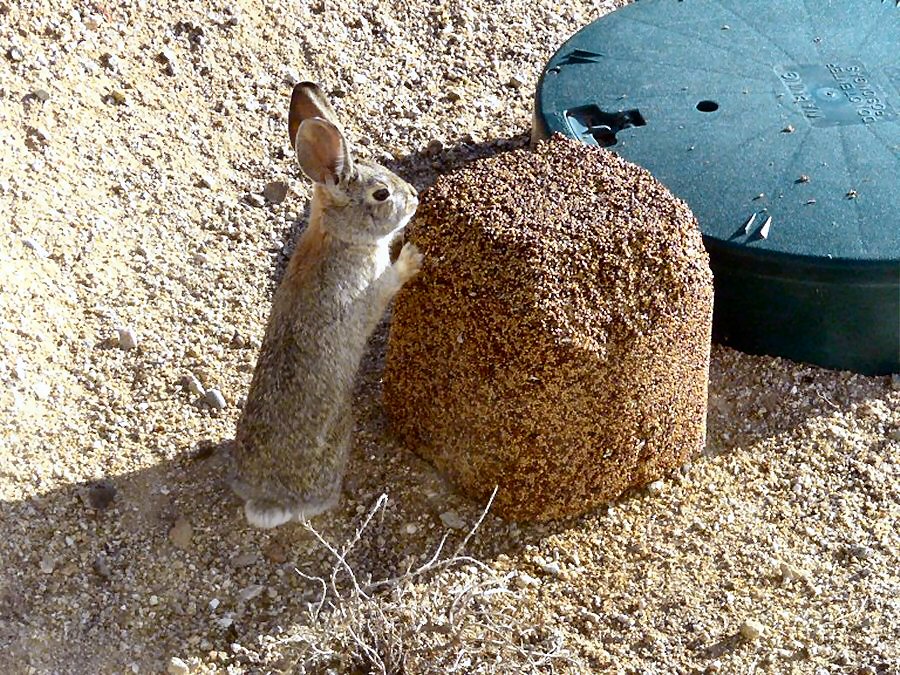
First at the quail seed block was this quail? That is not a quail! |

Then his buddy showed up. |
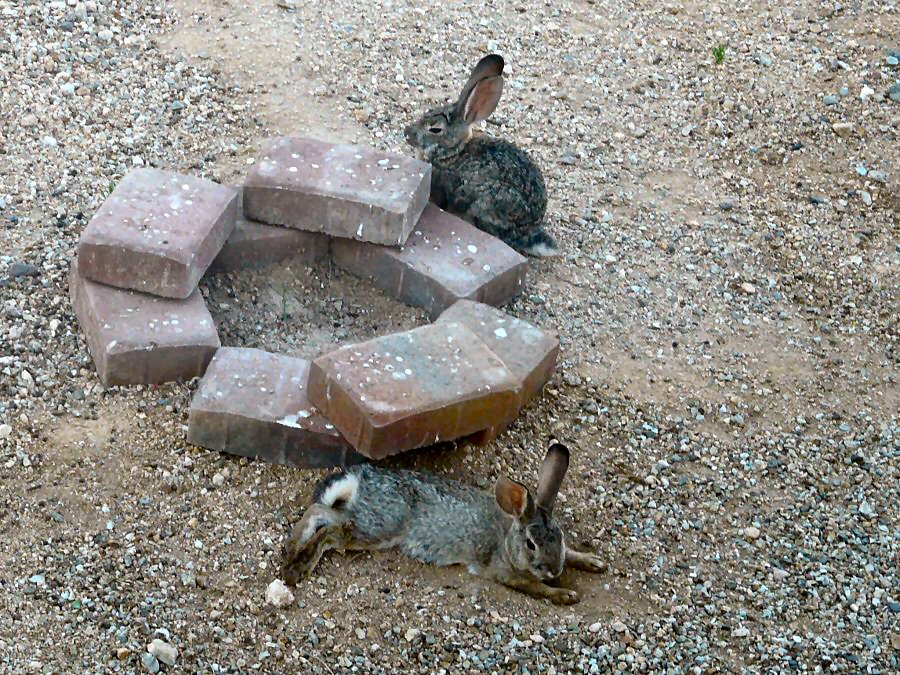
After eating they has to take a nap. |

Then the Eurasian Collared-Doves show up. |

This bird is a House Finch. |

The Curve-billed Thrasher have a noisy whistle sound. |

Even a Gila Woodpecker shows up for seeds. |
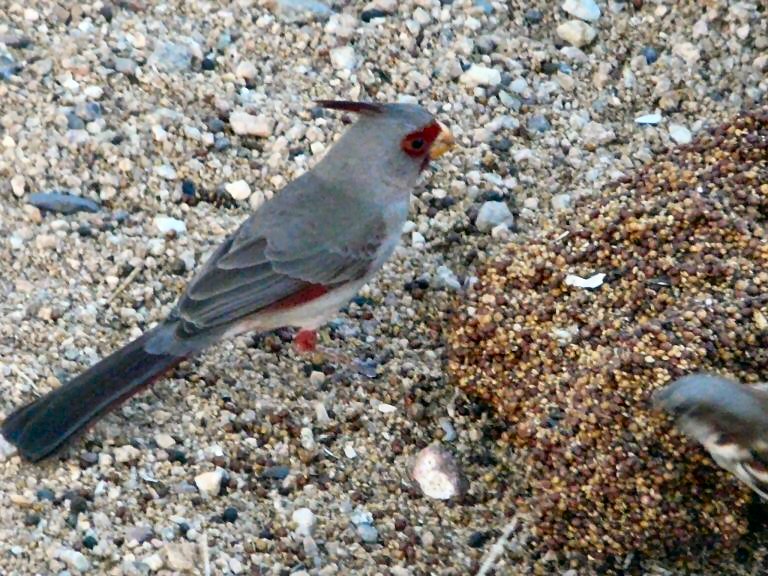
This is the first female Northern Cardinal I have seen in Arizona. |
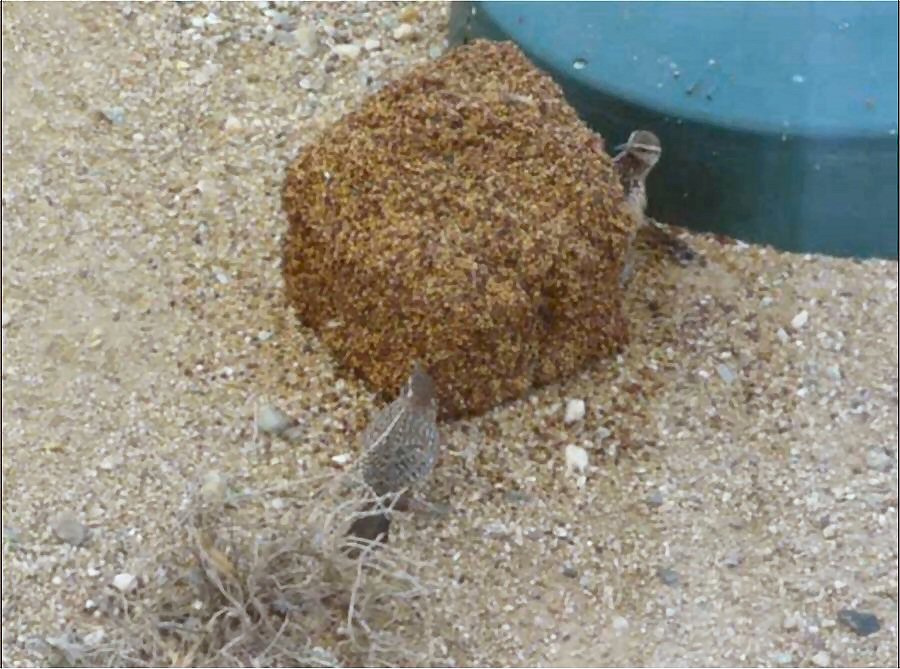
The Cactus Wren is finally eating outside our coach. |
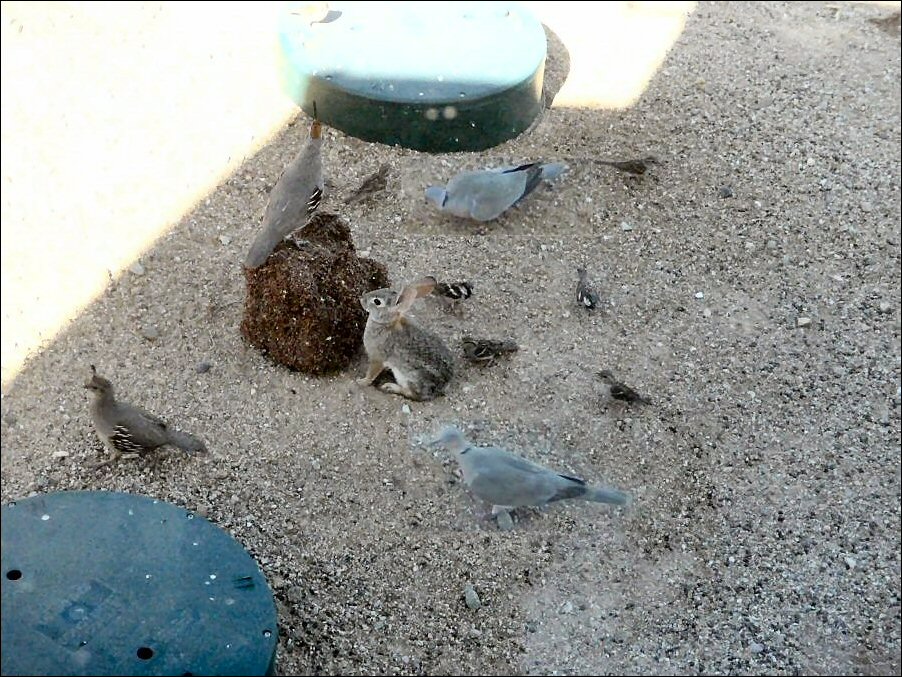
Then they decide to share. |
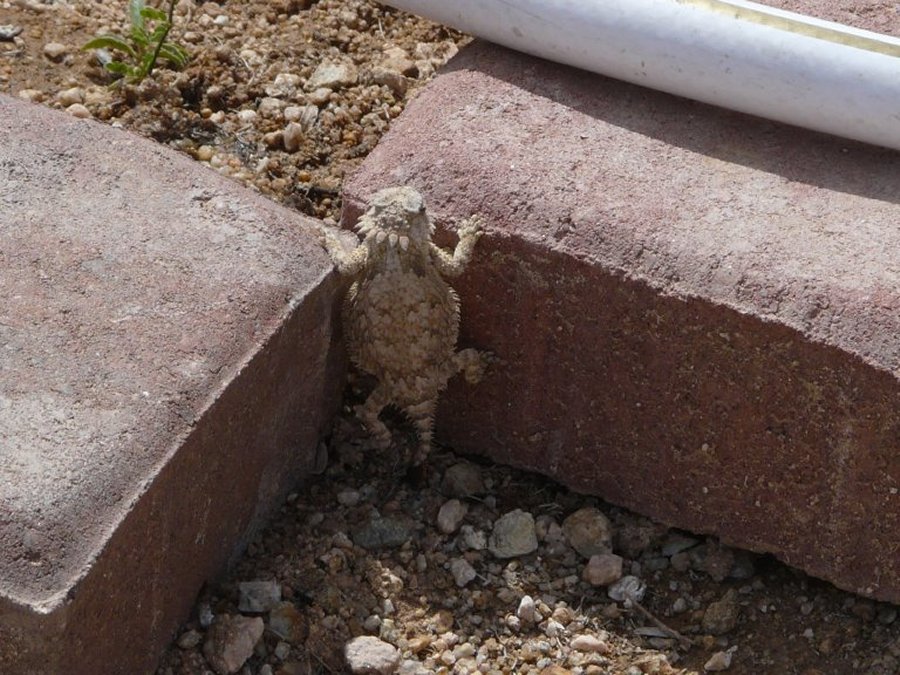
Even this little horny toad (Horned lizard) showed up. |
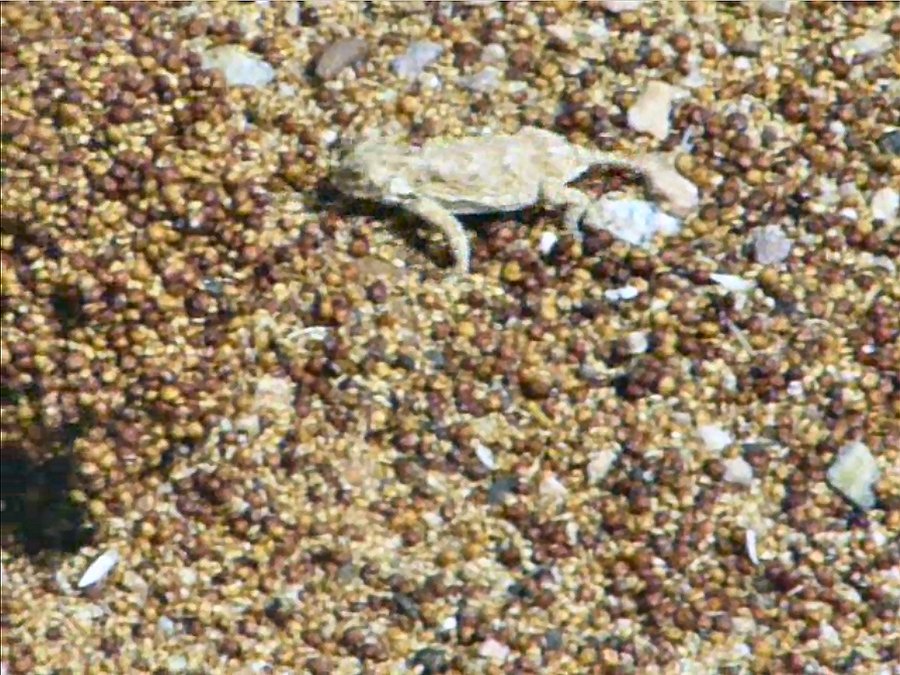
I was surprised to see him eating from the bird seed block. |
The Cactus Wren is the largest North American wren, at 7.1–9.1
in long and live for 7 - 10 years. Unlike the smaller wrens, the Cactus Wren is easily seen. It has the loud voice characteristic of wrens. The Cactus Wren is
much less shy than most of the family. Its marked white eyestripe, brown head, barred wings and tail, and spotted tail feathers make
it easy to identify. Like most birds in its genus, it has a slightly curved bill. There is little sexual dimorphism. The Cactus Wren
primarily eats insects, including ants, beetles, grasshoppers, and wasps. Occasionally, it will take seeds, fruits, small reptiles
and frogs. Almost all water is obtained from food, and free-standing water is rarely used even when found. It is a bird of arid
regions, and is often found around yucca, mesquite or saguaro; it nests in cactus plants, sometimes in a hole in a saguaro, sometimes
where its nest will be protected by the prickly cactus spines of a cholla or leaves of a yucca. |
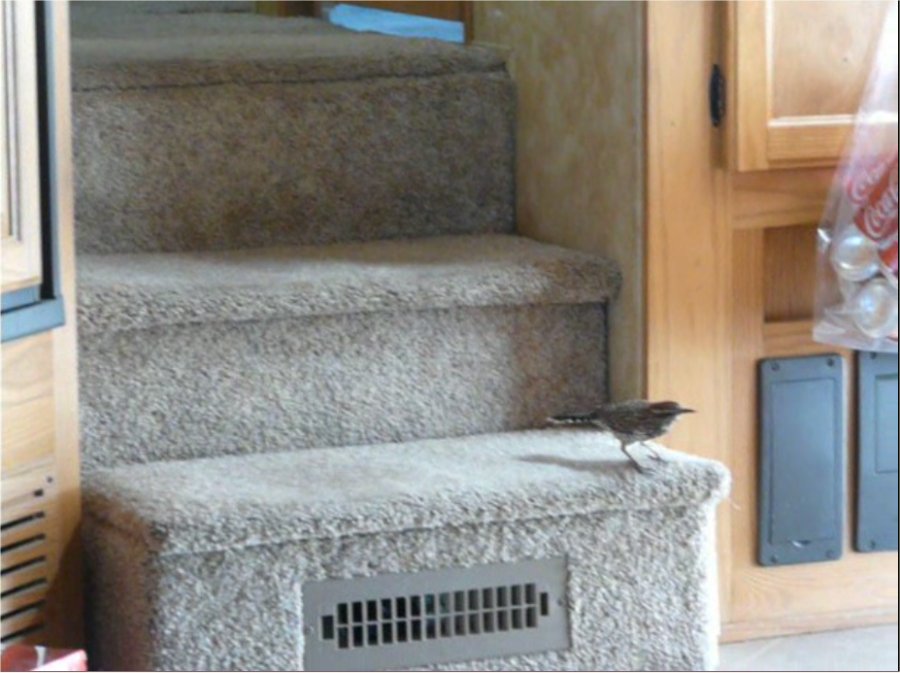
Click on the picture to view a 1 minute video of our new guest on April 21. |

Spring time and the baby quail are out. |
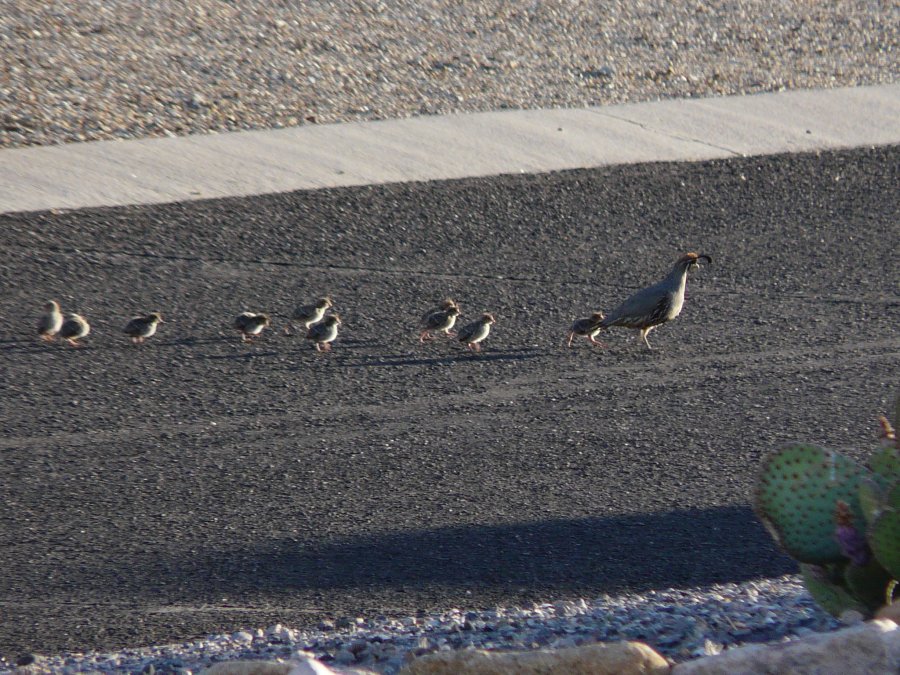
There are 12 in this brood with two not very photogenic. |

We called this guy fats so. |
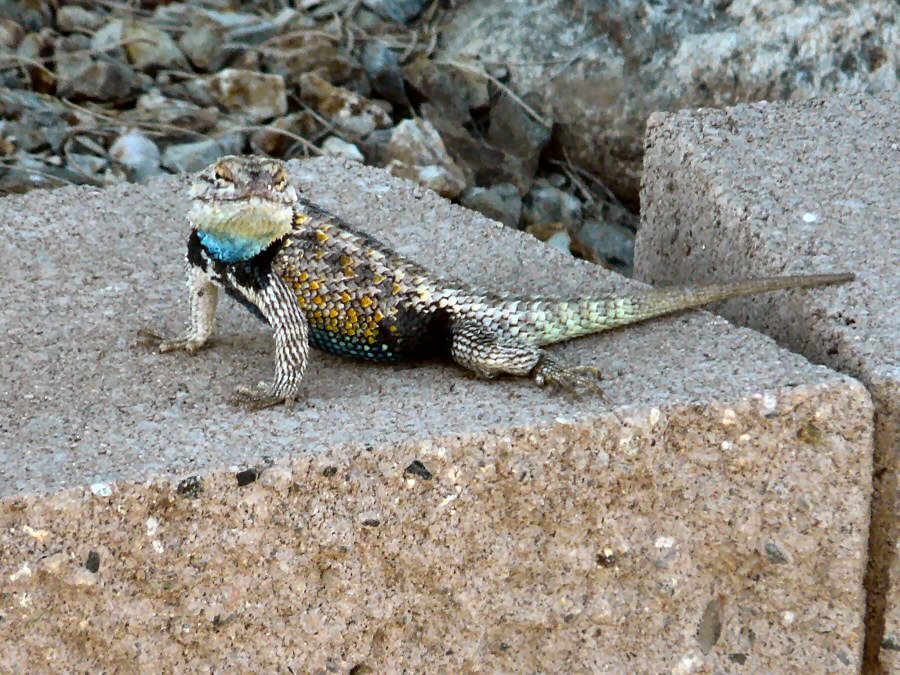
It's really a Yellow-backed Spiny Lizard. |
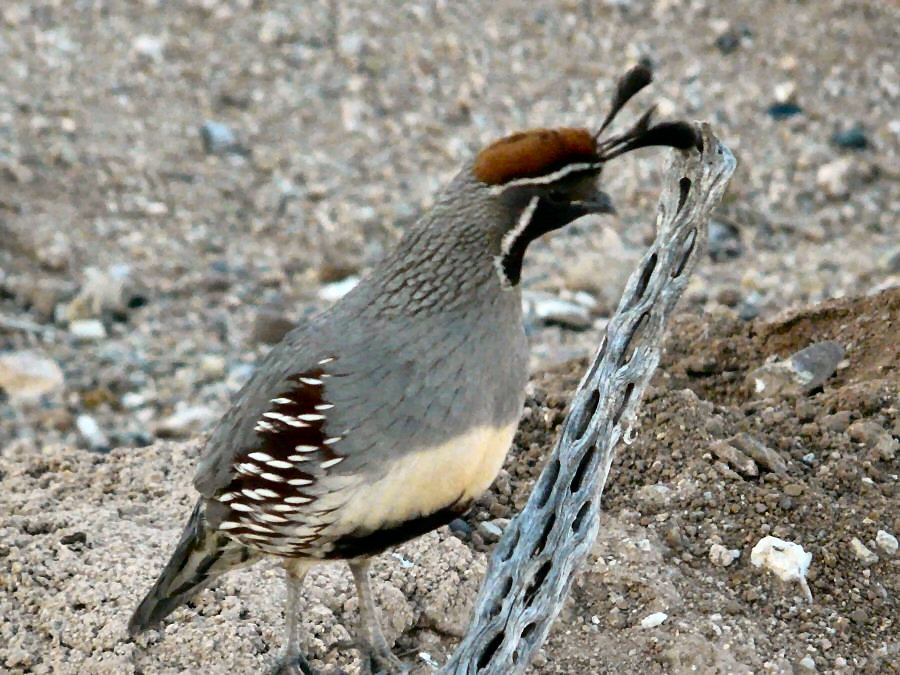
First Gambles Quail I have ever seen with three top-knots. |

This guy is not interested in seeds. |
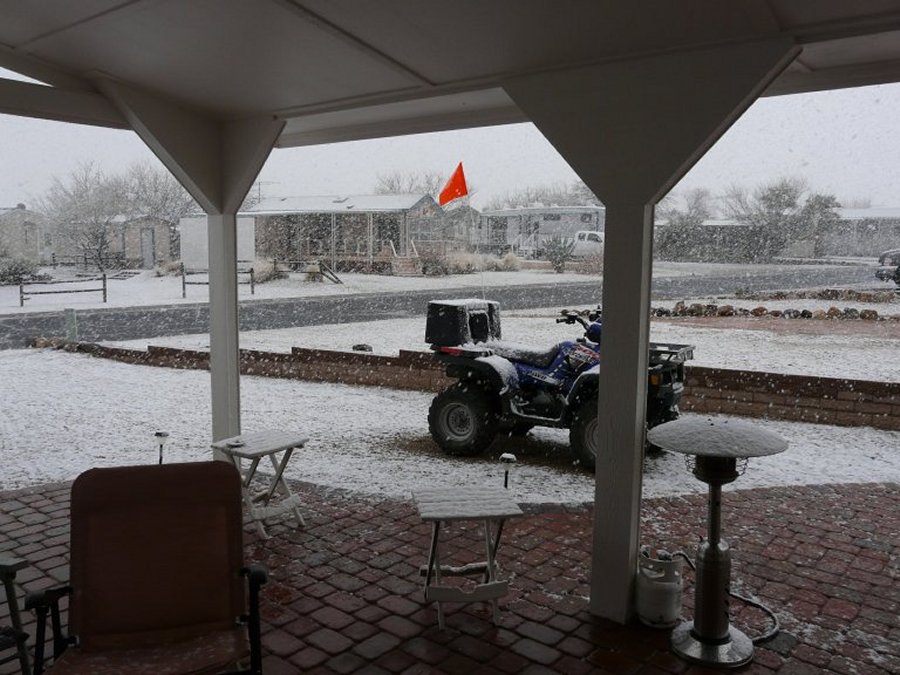
In February we had a great snow storm. |

The snow was gone in an hour except for the mountains. |
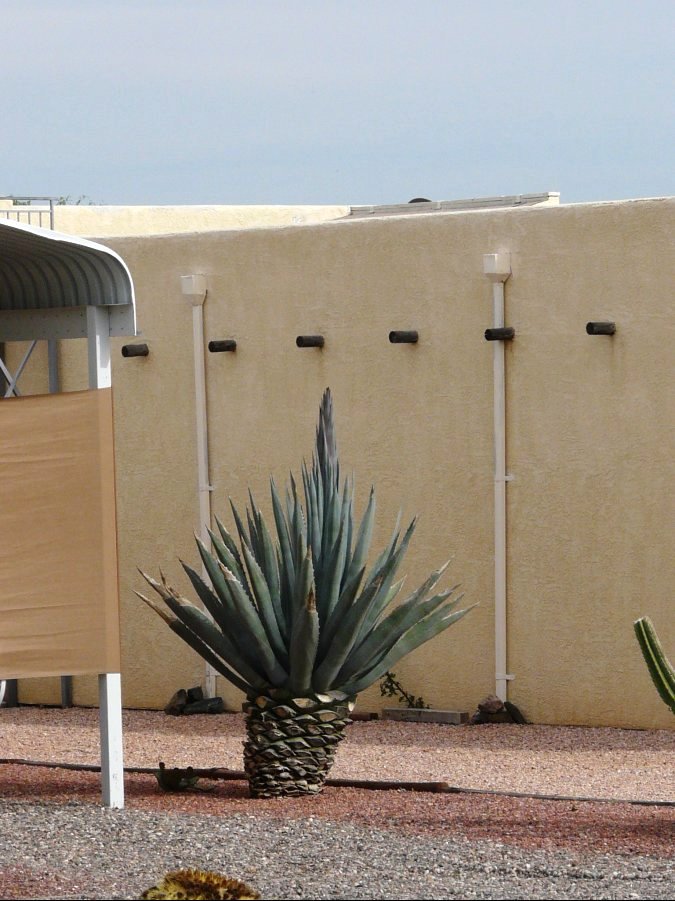
On April 9th Mel's agave started to spike. |

June 12 Mel's agave finally fell over onto Mac's house. |
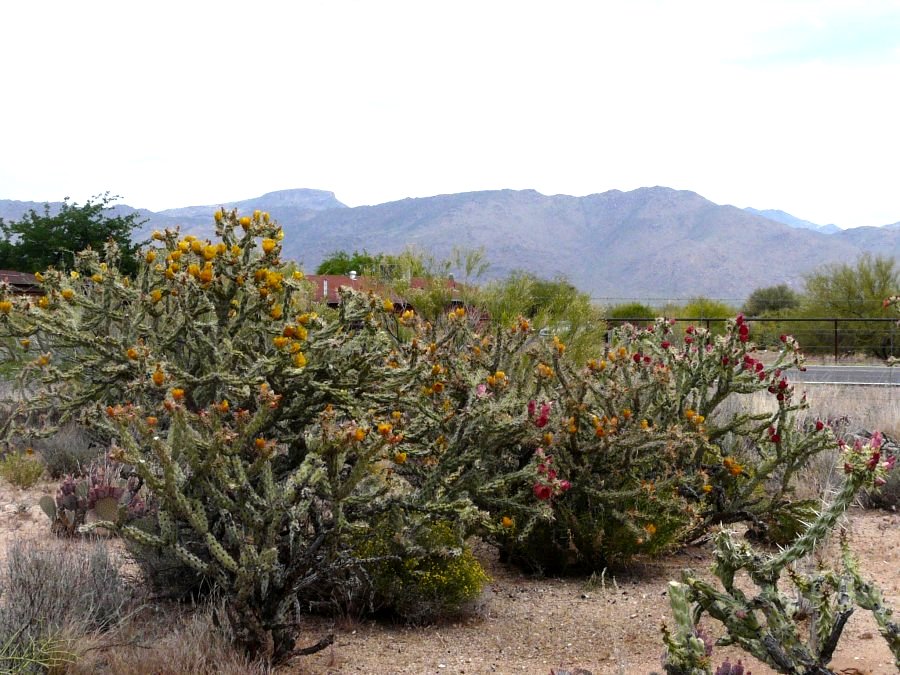
This cactus has three different colored flowers on it. |
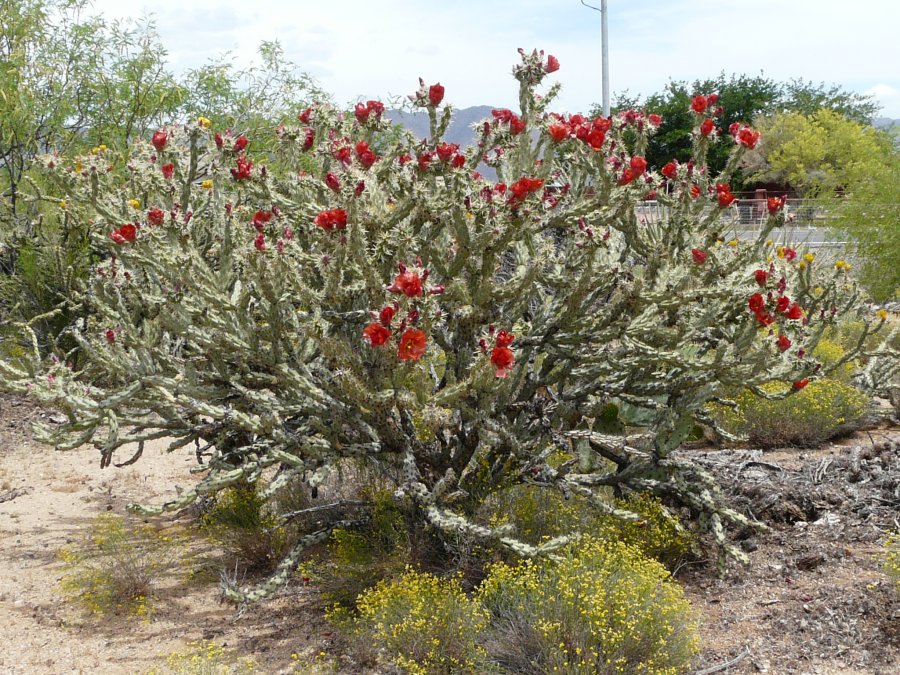
This one has all red flowers on it. |
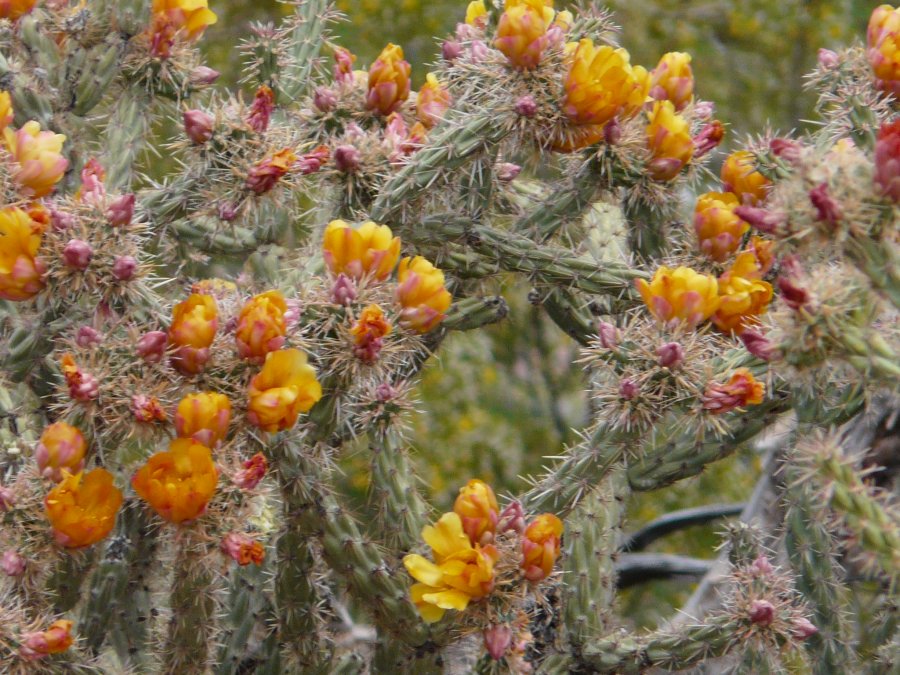
These flowers are an odd color mix. |
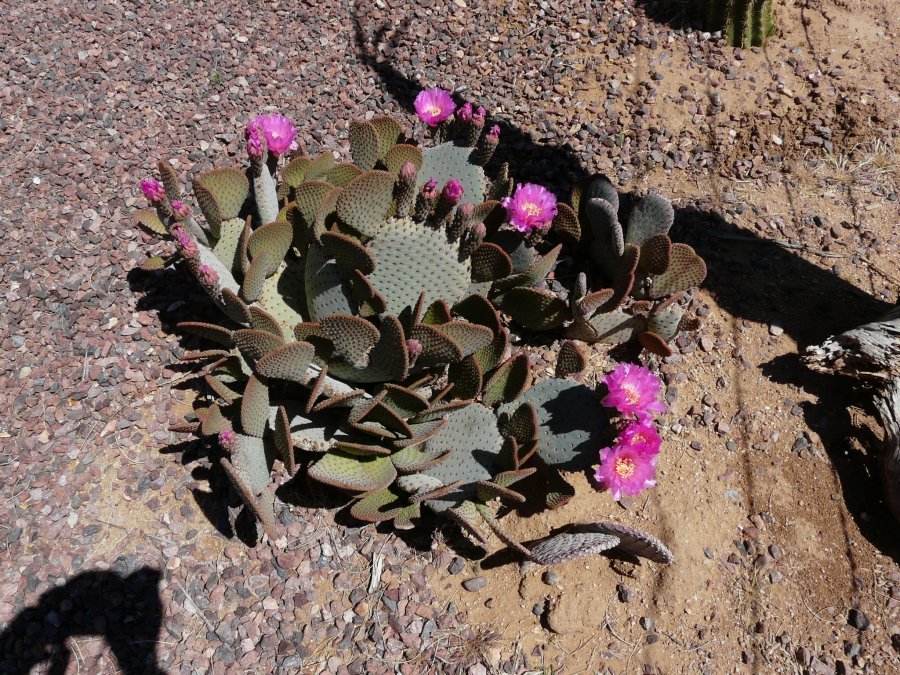
The Beaver Tail is blooming. |
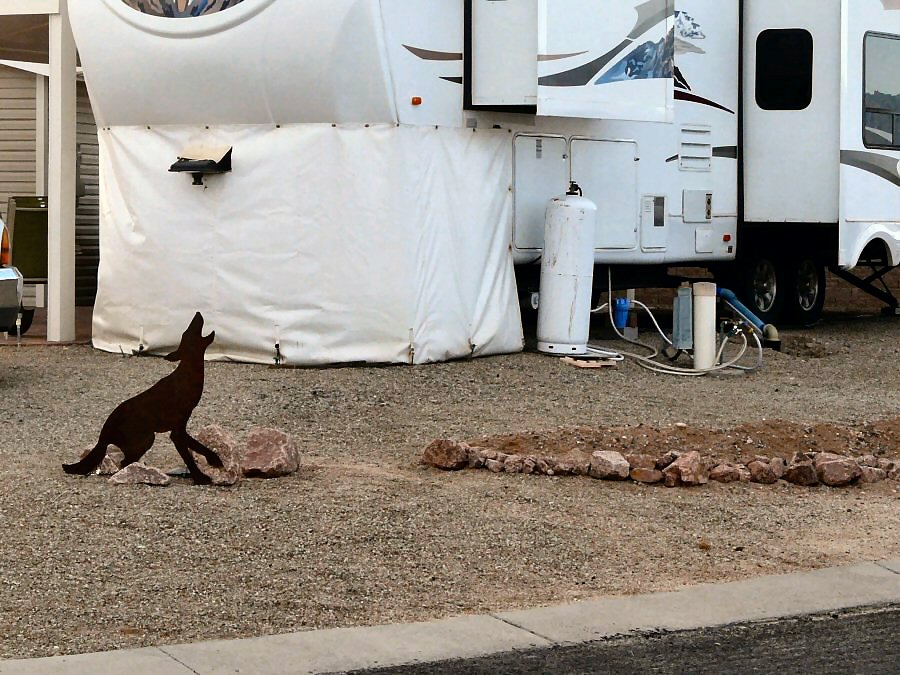
In May we hauled some rocks for our mounds. |
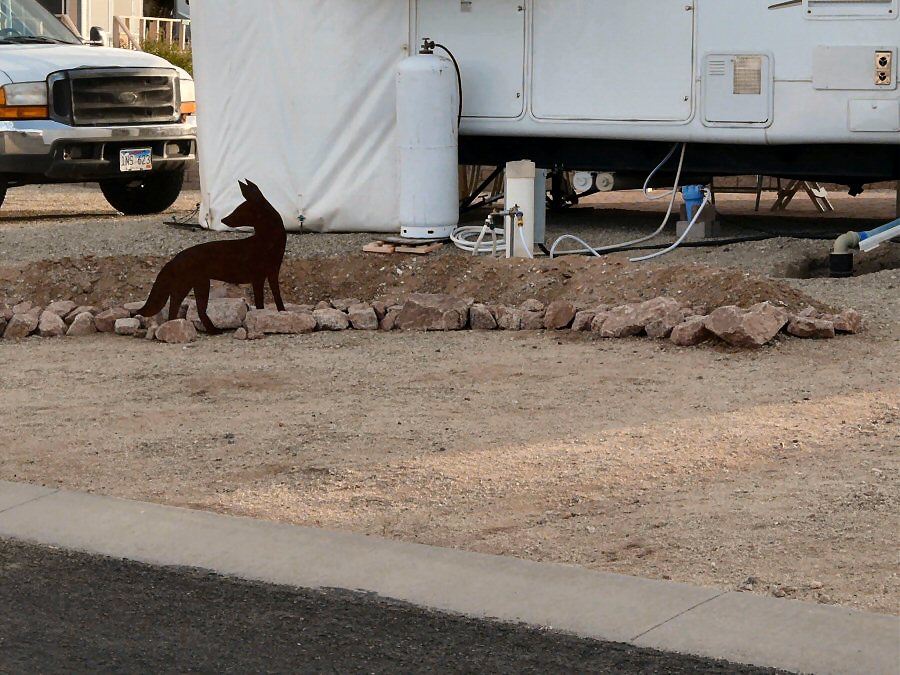
We also bought two coyotes at a garage sale. |

Looking good |

In June the Saguaros start to bloom. |
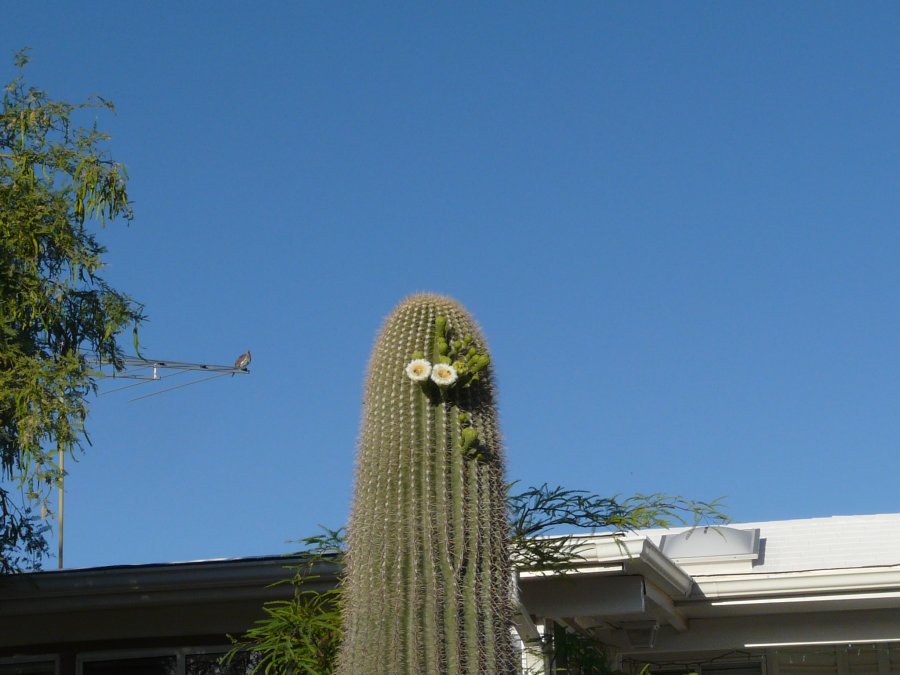
|
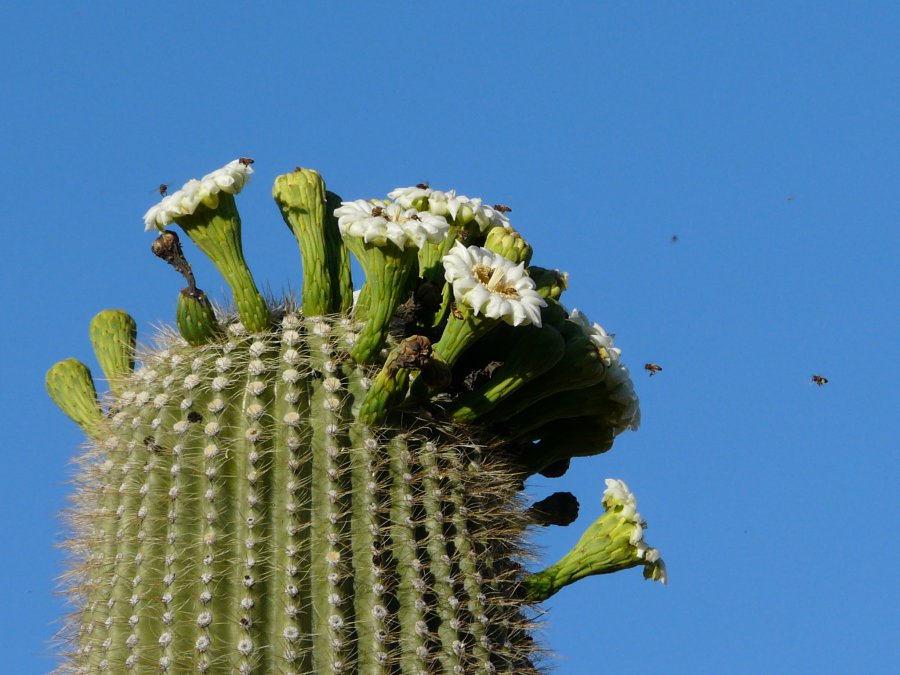
The bees are in seventh heaven. |
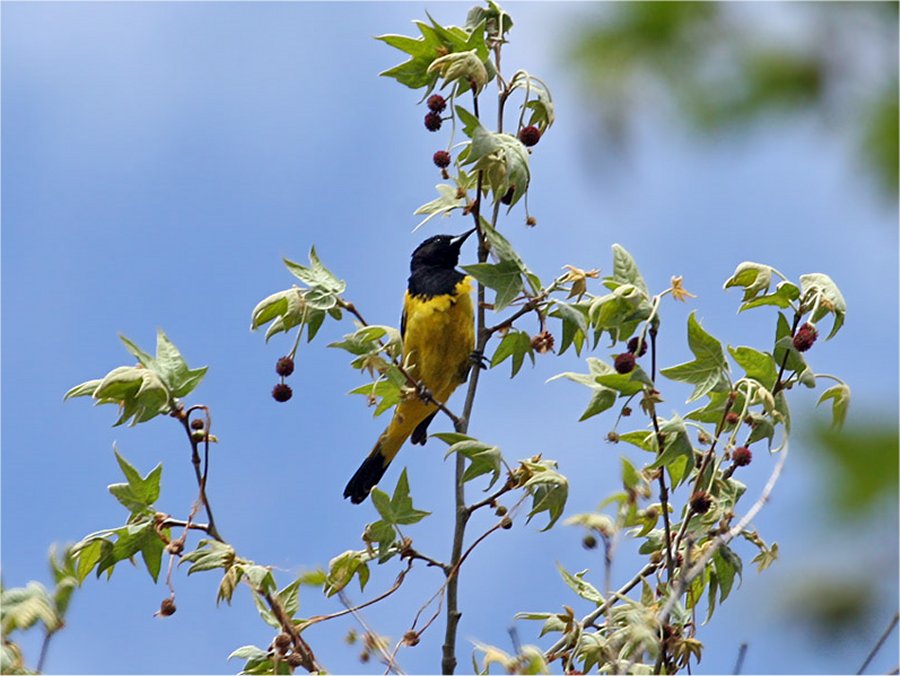
In June I saw a Scott's Oriole in the mesquite tree, but he left as I grabbed the camera so I found this picture on the internet of one. |
![]()
![]()
![]()